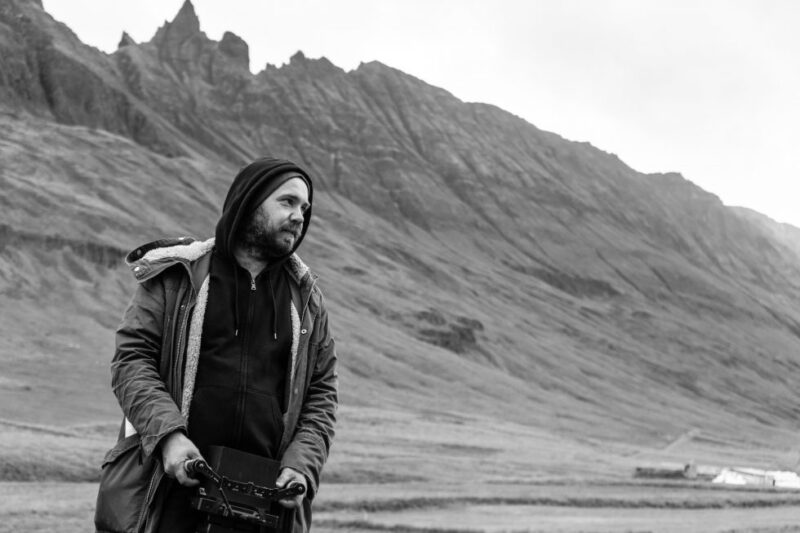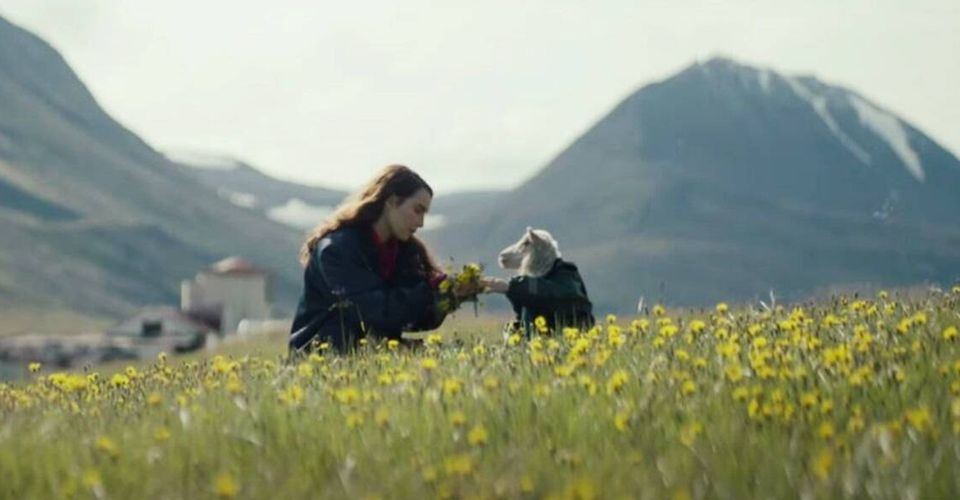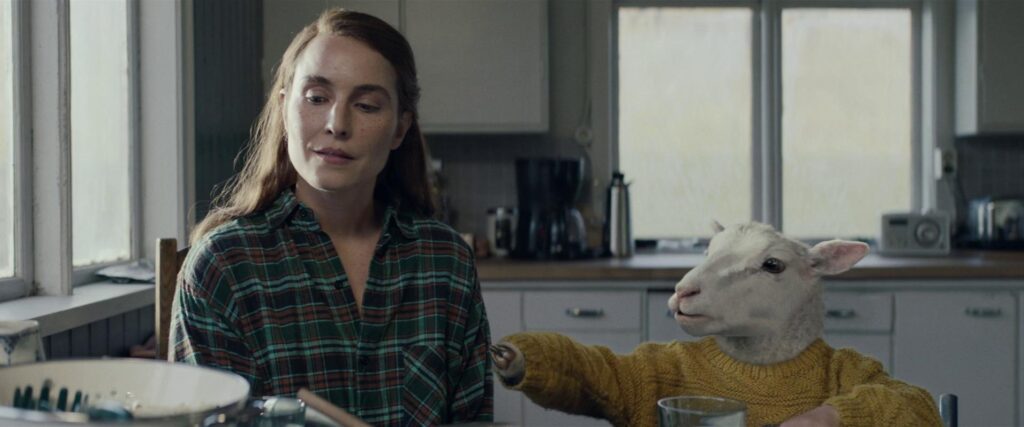Submitted by Iceland to the 94th Academy Awards, Valdimar Jóhansson’s debut feature Lamb / Dýrið is a surreal film inspired by Icelandic folktales. Farmer María and her husband Ingvar are shocked when one of their pregnant sheep gives birth to a human/sheep hybrid with a mostly human body and the head and right arm of a lamb. The whole focus of the film is on the bond between María, Ingvar, and Ada, the crossbred lamb they named after the loss of their child by the same name. However, the hybrid Ada’s biological mother becomes a troublemaker and tries to communicate with Ada. Lamb is an Icelandic film that tries to balance elements of the real world and the surreal world by utilizing Icelandic folktale elements with breathtaking Icelandic landscapes as a backdrop.
We talked to Valdimar Jóhansson, the director of Lamb, about the film, which can be watched on MUBI from February 25.
-Throughout the whole film, we cannot really pick up whether it is a horror film or not. It is more like influenced by folktales. How would you define the genre of the film, or do you rather not specify any genre at all?
VJ: I am not a big fan of specifying the genre, but I can say that I do not consider the film a horror film but rather a classical family drama with one surreal element. But it does of course draw from the Icelandic folktales, not one specific, more elements from a few of them.
-The opening sequence of the film made me think of Lucien Castaing-Taylor’s Sweetgrass (2009) by the massive scene with the flock of sheep. Have you seen the film or were you just influenced by this almost documentary-wise aesthetic and sound recording? How did the sound recording process turn out?
VJ: I have unfortunately not seen the film. The opening sequence was one that I and DOP Eli Arenson were never really sure how to solve until a few days before we had the right snowstorm (that was in February 2020) and when we finally shot it we managed to do it with a very small crew in really bad weather, that was indeed an incredible experience but we had a great farmer and her son helping us out with the flock of horses. The sound was recorded on location but we had to add a lot of sounds in the sound post-production and the mix.
-How about the Lamb’s birth scene? How was it to shoot that scene?
VJ: It was sort of stressful as by the time we started shooting only 12 ewes (out of 300) still had to give birth so we had (along with the farmers) to monitor really closely when it would happen. Noomi Rapace came one day before we started shooting, upon arrival she was shown by the farmer how to help the sheep to deliver, and on her first shooting day, she was summoned to set in a hurry to deliver lambs. She did that as if she had done it many times before, such a professional.
-I feel like there has been a series of films about animals and they make us think about how people relate themselves to animals. Another similar A24 film, Kelly Reichardt’s First Cow released in 2019. Do you think is there such a trend in the film industry these days? How did your story emerge in your mind?
VJ: I do not know if it is a trend but I wanted to use the animals to make the world of our characters larger, to have the animals give the extra dimension to the world. Animals sense the world in a different way, sometimes they will know things ahead of humans. My grandparents were sheep farmers and as a child, I lived close to them so I was very familiar with sheep. In the beginning, I had created a mood book, a dark one that included these two elements: a lamb child and sheep farmers. My producers Hrönn and Sara then introduced me to writer Sjón and together we all shaped the story, which Sjón then wrote out into the full script of Lamb.
-While watching the film, I could not stop thinking about the fact that you may have been influenced by the nature of Iceland. Was that a dominant element while you were creating the film universe?
VJ: Yes from the very beginning nature was a character in the film, it represents the beauty of life but also a threat to us humans. It is larger than us and cannot be controlled. Us humans should have learned by now to be humble towards mother nature, she gives a lot but she also takes. And we should respect her.
-Another element that comes to my mind is that we come across a very similar aesthetic and color scheming as Ari Aster’s Midsommar (2019) and Lamb feels like it possesses folktale details. Do you think that it is dependent to Nordic geography? Or is it more like a coincidence?
VJ: Midsommar had not been released when we were about to finish shooting, so that film was not a reference for Lamb. The color pallet for Lamb is very different, we were true to the Icelandic colors the are less vivid, more subtle. There is however a scene that resembles a scene from Midsommar, the scene where María places the flower chaplet on Ada´s head. We can in hindsight say it is a homage to Midsommar although I had not seen the film when we shot that scene. 🙂
-In the first place, you were not directly emphasizing parental love to the lamb but as long as the story evolves, as an audience, we notice it and you also make it clearer and concrete. What was your emphasis here?
VJ: I think that there are two important things here, firstly the couple María and Ingvar are very willing to scarify everything to fill the emptiness in their hearts after the loss of their child. Secondly, it is about acceptance. Does a child becomes your child because it is blood-related to you, can you accept a child that is different. We do not answer this in the film but it is something worth thinking about.
-The Icelandic Film and TV Academy has chosen Lamb for Iceland’s submission for 2022 Academy Awards, and the film also got Un Certain Regard prize at Cannes Film Festival. How does it feel to achieve all these with the debut feature film?
VJ: I am extremely proud and honored. This is my first feature film and we all knew that we were taking a big risk. All of my collaborators stood 120% behind my back and made this possible. I am especially grateful towards my producers who did not only take a creative risk but also a financial one.
-Could you tell us about your upcoming projects?
VJ: I have been traveling a lot in the past 6 months so I have not yet had the real head space to move ahead as I would have likes. But me and my producers have few projects in development and I look extremely forward to having time to move ahead. All of the projects are in a too premature stages to yet talk about them.


